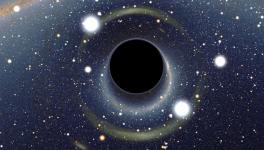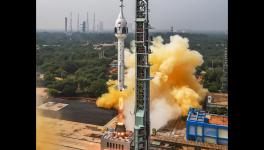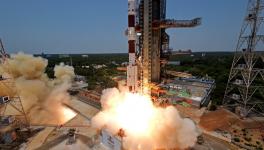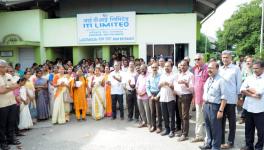Destination Aditya-L1 Mission: 4 Months to go!
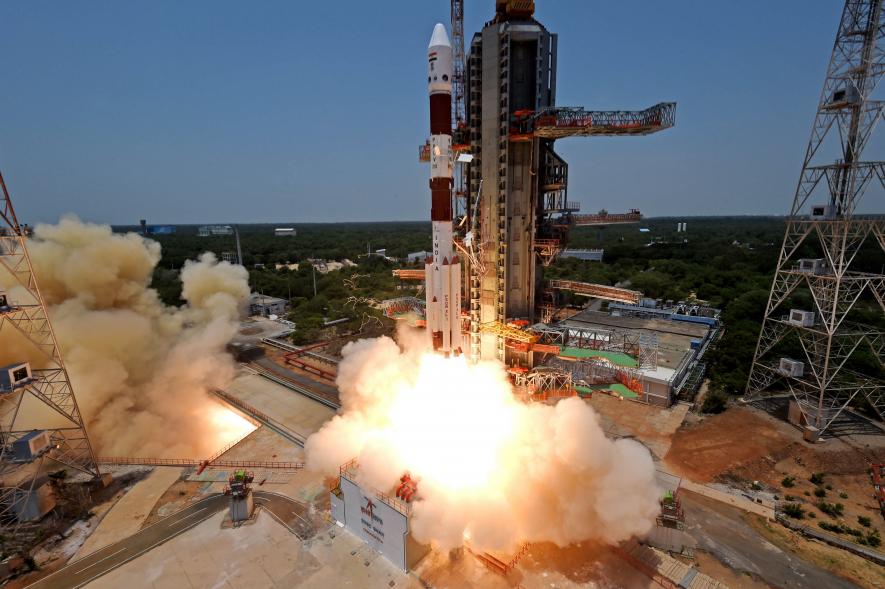
ISRO's launch vehicle PSLV-C57 rocket carrying India's first solar mission, 'Aditya-L1', lifts off from the Satish Dhawan Space Centre, in Sriharikota, Saturday, Sept. 2, 2023. Image Courtesy: PTI
Hot on the heels of the highly successful Chandrayaan-3 mission demonstrating soft-landing on the Moon, ISRO (Indian Space Research Organisation) launched its Aditya-L1 Mission on September 2, 2023, to study the Sun. This is yet another ISRO mission in the new set of activities over the past two decades looking outwards from Earth to other parts of our solar system, after many decades focusing on inward-looking or Earth-focused applications-oriented missions.
The earlier missions placed satellites in low-earth orbits (LEO) for earth observation, remote sensing, resource mapping etc, or higher-altitude geosynchronous or geostationary orbits (GSO) for communications and navigations systems etc. The new trend reflects the growing capabilities, confidence and ambitions of ISRO, with support from successive governments, and the availability of some additional funds in recent decades, however small compared with other space-faring nations.
Aditya-L1 is ISRO’s next foray into outer space after the Mangalyaan or Mars Orbiter Mission (MOM), India’s maiden attempt to reach out beyond the Earth-Moon system.
There are many scientifically interesting and significant aspects to the Aditya L1 mission. We can look at these at leisure and without pressure for two major reasons. It will take close to four months for the Aditya spacecraft to reach its intended destination and, further, there are no firsts or records for India to hanker after!
So let us look more closely at the Mission.
Aditya-L1 Mission
The Aditya (or Sun) spacecraft is a relatively light weight craft weighing 1,480kg carrying a suite of seven observatory-grade indigenously designed and made instruments which together constitute India’s first solar observatory.
The craft was launched from Sriharikota aboard India’s workhorse PSLV/XL medium-weight rocket launcher with a relatively large solid-fuel core and six strap-on solid boosters. As per ISRO’s current practice for beyond Earth missions, the spacecraft was placed in a highly eccentric or elongated elliptical orbit of 235km by 19,500km around the Earth.
Since then, three orbit-raising maneuvers have been conducted, with the Liquid Apogee Motors (LAM) on board Aditya being fired when the craft is at the lowest point thus powering the spacecraft further out into space in longer and longer elliptical orbits. On September 3, 5 and 10, the orbits were raised to 245 x 22,459km, 282 x 40,225km and 296 x 71,767km, respectively.
After two more such orbit-raising maneuvers the spacecraft will be flung out to space beyond the Earth’s sphere of influence or gravitational ability to drag it down, in the slingshot technique now perfected by ISRO, after which Aditya will enter its cruise phase and be injected into a trans-L1 trajectory. From here the spacecraft will be positioned such that it enters into orbit around a point in space designated L1 or Lagrange Point 1.
We will explain and discuss the five Lagrange Points of the Sun-Earth system, particularly L1, in the next section. For now, let us just note that L1 is a point between the Sun and the Earth, roughly 1.5 million km from Earth or 1% of the distance to the Sun, where the gravitational pulls of the Sun and Earth are equal or balance each other out. An object placed at this point, L1, would theoretically stay “stationary” at this point for ever. The stationary is in quotes because, of course, the Earth is orbiting the Sun, so the L1 point also goes around the Sun at a corresponding speed and orbital motion such that L1 maintains the same exact position between the Earth and the Sun. Such points exist between any two orbiting bodies in space.
For Aditya, the significance of the L1 point is that, by placing itself at this point, or rather in a specific orbit around it, Aditya can always face the Sun and record the various observations which the Mission seeks, and simultaneously also maintain line of sight with Earth.
The Objectives
The Aditya solar observatory has several instruments with which it will study various aspects of the Sun’s corona, the solar magnetic field, solar magnetic storms, coronal mass ejections (CME) i.e a mass flow of electrically charged particles thrown out by the Sun, space weather and other aspects and relay observations and data back to Earth in real time. The Mission is expected to last about five years.
To elaborate a bit, without getting too technical, Aditya seeks to understand better the dynamics of the heating of the Sun’s corona, the outermost part of the Sun’s atmosphere. This is not normally visible to the human eye due to its sheer brightness but is seen as a variable ring of fire around the Sun during a solar eclipse.
Another objective is to understand the coupling and dynamics of different layers of the solar atmosphere, particularly the corona and the chromosphere, which appears red due to the hydrogen burning there and is the thin layer of plasma between the Sun’s visible photosphere and the outer corona.
Aditya will also examine one of the not so well understood phenomena of the Sun, namely, why its upper atmosphere has temperatures over 1 million degrees C while temperatures in lower layers can be a mere 6000C?
Aditya will also seek to unravel the uneven temperatures of solar winds in different directions or anisotropy. Close observation of CMEs and the characteristics of the charged particles ejected, and the study of solar flares are other special aspects of Aditya’s mission.
The different aspects of solar radiation, impact on space weather, and solar winds that can trigger geomagnetic storms on Earth that can be highly destructive of electrical and electronic infrastructure are other subjects that Aditya will closely study. CMEs, solar winds and radiation reach L1 roughly an hour before they reach Earth, and thus open up the possibility of providing early warning to regions likely to be affected on Earth.
Several of these have been studied in the past, notably by NASA and in some missions with collaboration from European space and academic agencies. For example, NASA’s DISCOVR Mission launched in 2014 as a successor to its earlier ACE Mission, is stationed in L1 orbit and acts to provide early warning of solar flares, CMEs and solar winds.
The periodic observations due to the nature of the orbits of earlier spacecraft have been of late improved upon by new types of orbit, which have drawn more interest and attention of late, like those of Aditya. NASA’s Wind spacecraft launched in 1994 made numerous orbits but was later placed in an irregular so-called lissajous orbit for uninterrupted observations of solar wind, and then shifted to a less irregular orbit like Aditya’s in 2020 for even better recording and transmission of data. Aditya’s specific orbit which enables a perennially sun-facing attitude, constant line of sight communications with Earth, and real-time study of some aspects would make significant new contributions.
Aditya Halo Orbit at L1
The Lagrange points are named after 18th Century French mathematician Joseph-Louis Lagrange. He tackled what is termed the three-body problem (strangely called the two-body problem in ISRO’s website!), namely, is there a stable configuration in which three bodies could orbit each other yet stay in the same position with respect to each other? He found that there were five solutions to this problem, where the force required to maintain a small object in position is balanced out with the gravitational force exerted by the other two objects (See Figure 1). In three positions, the three objects are in line with each other. The other two points form equilateral triangles with two in-line points.
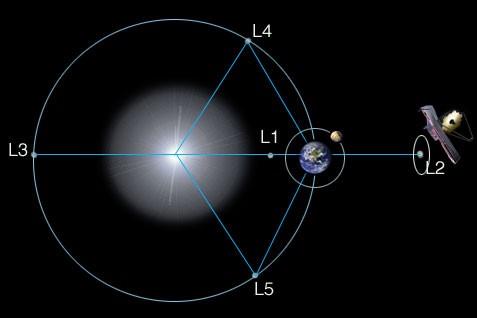
Figure 1
As may be seen, L1, around which Aditya is orbiting, is situated in-line between the Sun and Earth. This is most convenient, as it allows Aditya to maintain line of sight with both the Earth and the Sun. China’s Chang’e orbiter is similarly positioned at a different Lagrange on the far side of but above the Moon from where it can constantly receive signals from the Lander on the dark side of the moon and continually transmit them back to Earth.
To give a perspective, NASA’s famous James Webb telescope orbits the L2 Lagrange point on the other side of the Earth from the Sun. This telescope uses highly sensitive infra-red sensors that need to be sheltered from the radiation from the Sun, that reflected from both the Earth and the Moon, and even from the spacecraft itself! So, it has very effective sunshields and faces away from the Sun, Earth and Moon at all times!
Anyway, back to Aditya, although in theory, the Lagrange points are stable, a satellite parked there will always be subject to various forces in space and will need constant adjustment of position through firing of thrusters draining fuel and risking instability. Rocket scientists working with five or six different orbits have discovered the most stable orbits which require the least station maintenance, the term used to small burns of thrusters to maintain position of the satellite or spacecraft. For this sun- and earth-facing capability required, it is found that a slightly irregular, rather than purely elliptical, orbit roughly in a plane perpendicular to the Sun-Earth line, is best. This is called a halo orbit. (See Figure 2)
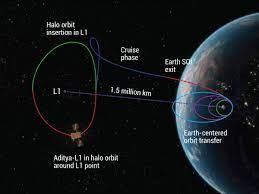
Figure 2
Now we wait about four months for Aditya to reach L1, enter into its halo orbit, and start its Mission!
Get the latest reports & analysis with people's perspective on Protests, movements & deep analytical videos, discussions of the current affairs in your Telegram app. Subscribe to NewsClick's Telegram channel & get Real-Time updates on stories, as they get published on our website.










